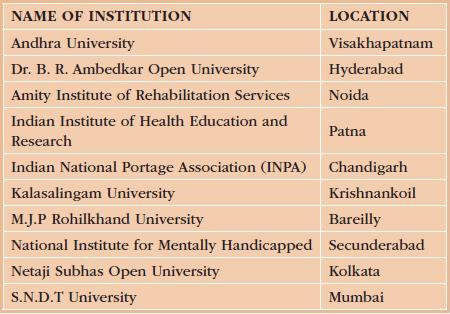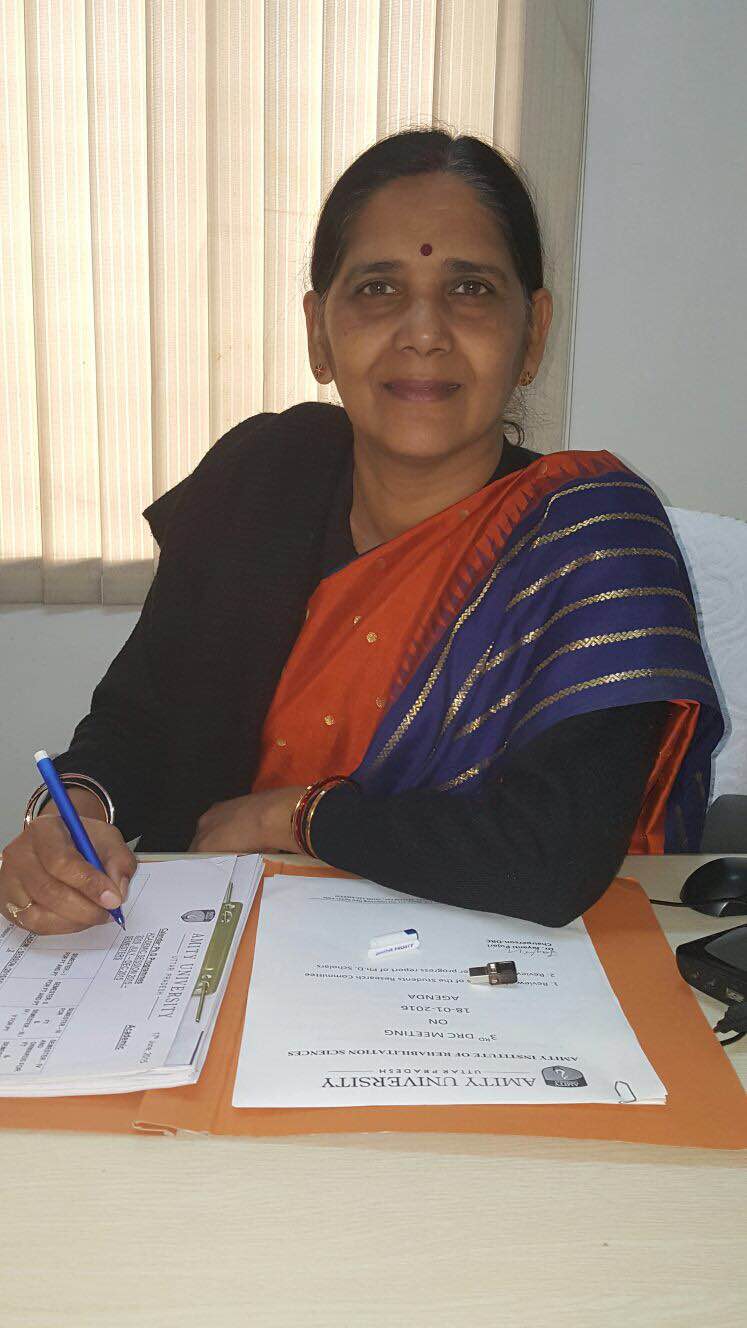Teaching in itself is a very popular career choice, but teaching students with special needs is exactly the opposite. Madhura Sansare delves into the world of special education and tells you what learning B.Ed in Special Education is all about.
What is special education?
They say every student needs to be taught differently, as they all learn by different methods. But children with special needs need more than just a unique way to education. They need a more specialized method. Special Education is the branch of education which uses special instructional methodology (Remedial Instruction), instructional materials, learning-teaching aids and equipment to meet educational needs of children with specific learning disabilities. Remedial instruction or Remediation aims at improving a skill or ability in a student. The techniques used for this include providing the student with more practice or more explanation than usual, repetitions of information and instructions, and all in all, providing them with more time to work on the skill. Remediation’s methods vary from student to student. For example, a student having difficulty in reading can be provided with remediation by one-on-one reading sessions, phonic instructions and by practicing reading aloud.
Qualification
All you need to join a course on Special Education is a Bachelors degree and an interest in teaching. Institutes all over the world offer Bachelors and Masters Programs in Special Education. Many organisations also go further to offer short term courses in the subject, which last from anywhere between 2 weeks to a month. But if you’re serious about pursuing Special Education as a full time career, we would suggest you only join courses of at least 1 year duration.
When does a child need special education?
Special education teachers work primarily with students with three major segments of disabilities, namely Learning Disability (LD), Mental Retardation (MR) or Intellectual Disability (ID) and Visual Impairment (VI).The teachers dealing with students with mental retardation or autism tend to teach them life skills and basic literacy. The teachers dealing with Visual Impairment or any other physical disabilities primarily teach the students to overcome their disabilities and lead normal lives. And the teachers dealing with students with Learning Disability use general education curriculum and modify it to meet the students’ individual needs.
Special education teachers mostly tend to work with students at the elementary, middle and secondary schooling levels, but some teachers do work with pre-schoolers as well. They also provide specified programs for specific learning disabilities, as well as speech or language impairments, mental retardation, emotional disturbance, multiple disabilities, hearing impairments, visual impairments, autism, combined deafness and blindness, traumatic brain injury, and other health impairments.
Students are classified under one of the categories, and special education teachers are prepared to work with specific groups. It is highly important to identify which group the student can be categorized under, as this helps in tailoring the education according to the students needs. Early intervention is essential in educating children with disabilities.
How do they work?
Special education teachers use various techniques to promote learning. Depending on the disability, teaching methods can include individualized instruction, problem-solving assignments, and small group work. When students need special accommodations in order to take a test, special education teachers see that appropriate ones are provided, such as having the questions read orally or lengthening the time allowed to take the test. Special education teachers help to develop an Individualized Education Program (IEP) for each special education student. The IEP sets personalized goals for each student and is tailored to the student’s individual needs and ability.
Teachers work closely with parents to inform them of their child’s progress and suggest techniques to promote learning at home. They are involved in the students’ behavioral, social, and academic development, helping the students develop emotionally, feel comfortable in social situations, and be aware of socially acceptable behavior. Special education teachers communicate and work together with parents, social workers, school psychologists, speech therapists, occupational and physical therapists, school administrators, and other teachers.
Special Education can be provided to the child as:
a one to one setting outside or within his/her formal educational environment.
* a Pull-out service where special remedial, therapeutic, or enrichment services can be provided to students outside the regular classroom which is referred to as Pull-out services.
* An Inclusive Model of education would imply educational provision for individuals with special needs within the educational system where these children study side by side with their mainstream peers, so as to enable them to develop to their full potential. Inclusion is an educational philosophy aimed at “normalizing” special services for which students qualify. Inclusion involves an attempt to provide more of these special services by providing additional aids and support inside the regular classroom, rather than by pulling students out for isolated instruction. Inclusion involves the extension of general education curriculum and goals to students receiving special services. It involves shared responsibility, problem solving, and mutual support among all the staff members who provide services to students. One aim of inclusion is to reduce the removal of students from the regular classroom when the same intent of service can be provided within the regular classroom.
The different areas looked into for a child with specific learning needs maybe-
Adaptation: A change in what students do or a reshaping of the materials students use. Adaptations are essentially the same as modifications, but can specifically refer to the materials and equipment student’s use to aid in learning. Enlarging the print on a worksheet and audio taping a textbook are examples of adaptations.
Cognitive learning: The area of learning based on knowledge and reasoning; also called academic learning.
Compensation or compensatory instruction: Instruction aimed at tackling a problem or an area of difficulty. Techniques for compensatory instruction include the use of alternative instruction, alternative techniques, and adaptive equipment.
Co-teaching: An instructional arrangement in which there is more than one adult in a classroom, instructional and classroom responsibilities are defined and assigned, and some type of co-planning is involved.
Individualized education program/plan (IEP): A written plan of educational goals and objectives for a student. This plan is reviewed and rewritten each year.
Modification: Reducing the number of questions students must answer at the end of a textbook chapter, allowing a student to answer aloud instead of writing an answer, and allowing the student to do an activity that is different from what the other students are doing are all examples of modifications.
Where do they work?
Special Educators are not just restricted to schools and colleges, as one may expect. There are various facilities that need people with their specified skill set, like:
Special schools: Commonly, you will find special educators working at special schools, assisting students with special needs in honing their academic skills.
Rehabilitation centre: A large number of public and private rehabilitation centres that require special educators
Private support: Just like any other career, special educators also get to choose between working in public sector and private sector. Especially in India, it is very common to find special educators working independently. They can also work part-time in any of the aforementioned facilities while privately tutoring students as well.
Schools in India offering B.Ed in Special Education

The Director’s Perspective

Dr. Preeti Verma, Head of the Department of Special Education at SNDT Women’s University tells us what is it like heading the most-sought after course in Special Education
Very few Indian colleges offer a B.Ed in Special Education in Mumbai. According to you, what is the reason behind the same?
It depends on the ideology of the management. Running a Regular B.Ed is far more profitable than B.Ed in Special Education. The intake in regular B.Ed is above hundred as opposed to 30 in Special Education. Also, Regular B.Ed is more in demand because of more number of mainstream schools.
What are the career options available to a student after pursuing this degree?
Students pursuing this career become special educators in special and inclusive schools following state, national and international curriculum. They can work as Practitioners, Teacher educators and Managers. They can work as researchers in the field of Special Education. They may work as Consultants and coordinators in the area of inclusive education services; may even get involved in policy making.
Can you tell us a little more about your curriculum?
There is a paradigm shift in higher education. The curriculum is designed to empower special educators to teach students with disabilities in inclusive and special school settings. It gives thorough knowledge in specific disability areas, as well as cross disability areas (other disability areas). It also trains in different pedagogies of teaching. The emphasis is on developing skills and knowledge and understanding how curriculum can be transacted across disabilities
You tend to have a lot of in-house internships at various schools across the city for your students. What are some of the challenges that you face due to these internships?
There aren’t any challenges. Sometimes the organisations where the students intern do not understand the objective of the placement, hence expectations differ.
What advice would you give a student who is planning to pursue a career in special education?
If you have compassion, feel passionate about learning and think you can make a difference in a child’s life; this is the course to undertake.

Dr. Jayanti Pujari, Director, Amity Institute of Rehabilitation Sciences, Amity University Uttar Pradesh talks to us about what it takes to become a Special Education Teacher
Dealing with children with special needs is not as easy job. What according to you are certain characteristics that a student must have in order to be successful in this field?
Special education teachers work with children with a wide range of disabilities. Whether dealing with minor learning disabilities or students who have severe physical and cognitive disorders, a special education teacher must have the skill and knowledge to know how to best work with the child. All children need love, encouragement, and support, and for children with needs, such positive reinforcement can help ensure that they emerge with a strong sense of self-worth, confidence, and the determination to keep going even when things are tough.
The characteristic feature of a special educator is that they shall be accepting of all students, no matter the disability or special need. This includes teaching all students with dignity and respect. You must remember that even students who cannot speak or who function at low levels have feelings and can often pick up on negativity or when someone is feeling uncomfortable. Every child in your classroom must feel valuable. Working with children with special needs requires enormous amounts of patience and persistence.
What advice would you give a student who is planning to pursue a career in special education?
In context of Amity Institute of Rehabilitation Science, the students are exposed to well-equipped laboratories, which help them to gain expertise in handling various tools. The institution also stresses on the ethical and moral values for all the students. All our students are strongly encouraged to participate actively in seminars, workshops and community based rehabilitation programmers. In addition to the rigorous course curriculum, Amity also offers value added courses which include a range of Industry Oriented Training and Certifications, Compulsory foreign Language, Behavioural Science and Communication Skills. We also provide interactive sessions to our students with the professional world.
Learning To Be A Teacher

Kuhoo Jugran
Amity Institute of Rehabilitation Sciences
M.Ed Special Education (Mental Retardation)
What are the major challenges that you have faced in your studies till date?
I have had opportunity to go to other schools and observe things I have learnt in theory class due to this course. When I was doing my IEP practice in a renowned special school, I was trying to work and assess a child with mental retardation who did not want to interact with me. I reported the same to my faculty. They urged me to keep trying for 3 days continuously to gain rapport. One the 4th day I vehemently requested my faculty to get a change in the assigned child and swap it with one of my colleagues. To my surprise the next day the child came to me and asked me why I didn’t come to him and that he was waiting for me. I was overwhelmed knowing that I mattered to him. And I took it as a lesson that even when you feel that the child isn’t responding to you and you tend to disheartened, you have to try over and over and over again because somewhere inside the child is learning very important things about life.

Sara D’souza
SNDT
B.Ed specialising in I.D (Intellectual Disability)
If you could give any advice to your fellow peers who are also considering an education in special education, what would it be?
I used to teach Music for two years. I had an autistic child who used to come to me to learn music. Over time, as I got to know him and got to know more about his disability, it made me feel like this is really something that I want to pursue and learn more about. My advice would be that you have to learn to love your students and understand them so completely that you can tailor your teaching to them. If somebody wants to get into the field of special education, I’d say great; it’s a brilliant field, it’s really rewarding and you just get so much joy out of doing what you’re doing, but all of it is only if you love your students. You need to have patience, you need to have that love, because love is really very important and then you just have to work towards it. It’s just like how a mother would work towards anything for her child; you basically do the same thing for your students.

Deesha Patel
SNDT
M.Ed specialising in I.D (Intellectual Disability)
What compelled you to pursue a career in special education?
After completing my B.Com degree, I took a break of 1 year, trying to figure out what I wanted to do next. I joined an organisation known as Rotaract, started conducting quilling workshops in Goa, and also became a faculty in an annual workshop for school children known as Live Life. Having all these interactions and encounters with the kids big and small, I thought of going into the teaching field. I joined Euro Kids, an international pre-primary school, worked there as an administrator. I had student in that school who had autism. His parents were suppose to take him to U.K, which was something I couldn’t digest. It hurt me to know that inspite of having special educators in the country, the parents felt a need for this child to be taken to U.K. When I read about autism, I came to know about the field of special education. That’s when I decided to go ahead and pursue the field of teaching and do my B.Ed in special education.

Sneha S
SNDT
B.Ed specializing in L.D (Learning Disability)
What are the major challenges that you would say that you have faced in you academic career till now?
For me, the most challenging aspect of this course is the practicals. At the same time, I think that is exactly where you feel like you’re learning something as well. Practicals are where we go and give lessons to students at different schools. For example, when we are scheduled to give lessons to kids at a school in a certain week, we’re also given a particular set of lessons to give, like 10 lessons of different topics. We’re given the child that we are supposed to teach, sometimes it’s a group lesson; sometimes it’s an individual lesson. And then you go teach the child keeping in mind the child’s disability and you tailor your lesson accordingly. So that is our practicals at least for our current semester. Usually, every B.Ed institution has a lot of tie-ups or they know people who will support them to send student trainees to institutions to get a first-hand experience. We will also have an in-house internship in Sem 4.






























